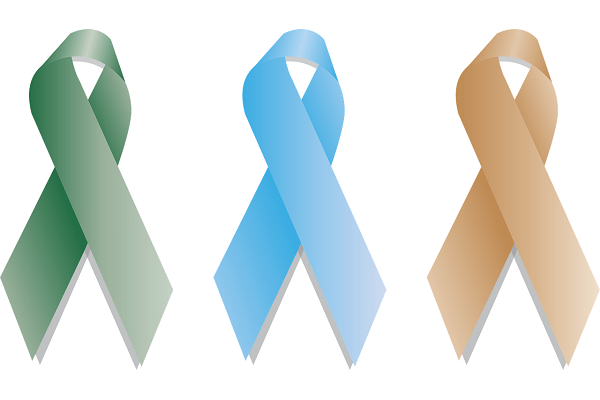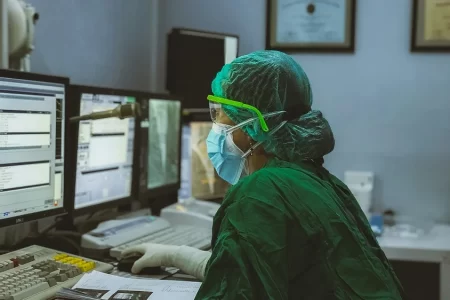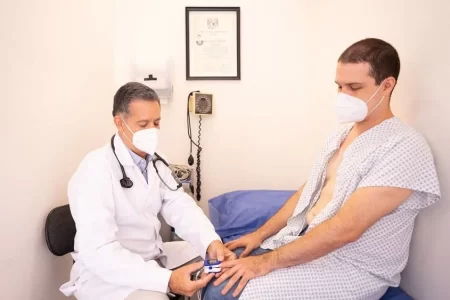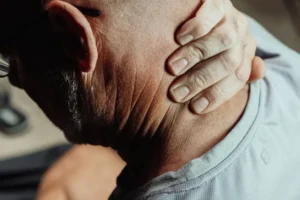5 Most Frequently Occurring Cancers in Older Adults
- Updated on: Jun 29, 2024
- 4 min Read
- Published on Oct 7, 2022

There are more than 100 known types of cancer, a disease that involves abnormal cell growth in one or more parts of the body. Cancer afflicts people of all ages, but the risk heightens as a person gets older. As many as 60 percent of all cancer cases occur in the elderly, and patients aged 85 and older represent 8 percent of all new cancer diagnoses. Moreover, up to 70 percent of all cancer-related deaths are of cancer patients aged 65 years old and above.
The severity, occurrence, and overall impact of the disease on the health of an older adult all depend on myriad factors. For example, sometimes it has to do with the sex of the person, as is the case for breast cancer and prostate cancer. A senior citizen’s recovery from cancer can also be complicated even further by the existence of co-morbidities such as heart conditions, cerebrovascular conditions, high blood pressure, diabetes, sensory impairment, and general physical frailty brought about by aging.
What cancers occur most frequently in older adults, and what should the patient and their loved ones know when making major decisions for cancer care? Here are some fast facts on the five most common cancers for people of advanced age, plus how to go about their treatment:
Breast Cancer
Breast cancer is the world’s most prevalent cancer, and it is one of the most common types of cancer for women above 60. It manifests in symptoms like breast pain, lumps in the breast or underarm region, swelling in part of one’s breast, irritated breast skin, redness or flakiness in the nipple area, and abnormal nipple discharge.
Significant medical advancements have been made in the area of screening and treatment for breast cancer. If the cancer cells are detected early on, someone with breast cancer may still be able to survive at least five years past their diagnosis. Older women should consider getting yearly mammograms or chest x-rays, which afford them the best possible chance of catching breast cancer in its early stages and choosing the most effective treatment options.
Lung Cancer
Lung cancer is the second most prevalent form of cancer in the world. It is the most common type of cancer among men and the second most common cancer among women after breast cancer. This is a particularly deadly type of cancer for the elderly; more than half of the world’s lung cancer cases comprise people who are over 70 years old. In addition, only about 21 percent of lung cancer patients typically survive five years after their diagnosis.
Warning signs of lung cancer include chest pain, wheezing, recurrent coughing, bloody coughs, unexplainable weight loss, and unexplainable fatigue, among others. It is typically diagnosed via CT scans of the lungs. Screening for lung cancer is highly recommended for elderly people who are regular smokers, as well as people who smoked for 30 years or more before quitting tobacco.
Prostate Cancer
Prostate cancer is the second most malignant cancer in men after lung cancer, and it is definitely a condition to watch out for among men who are 65 and older. Symptoms of prostate cancer include frequent urination, difficulty urinating, weak urinal flow, and blood in one’s urine or semen. Signs likeback pain, testicular pain, or sudden weight loss in addition to the aforementioned symptoms indicate that the cancer may have spread and gotten worse.
Men can get screened for prostate cancer either through an antigen test or by being examined by a doctor, such as during an annual check-up. Doctors should be able to give a clear answer on whether the symptoms point towards prostate cancer or a non-cancerous health condition called benign prostate enlargement, in which men’s prostates naturally get larger as they age.
Colon Cancer
Colon cancer is the fifth deadliest cancer in the world, and it’s estimated that more than half of all colon cancer cases occur in adults aged 67 and older. The symptoms of colon cancer include changes in bowel movement habits, rectal bleeding, and continuous abdominal discomfort.
Patients who are at risk of getting colon cancer due to their family history or who are already experiencing colon cancer symptoms should consider getting a colonoscopy done. This process, which requires the insertion of a fiber-optic camera through the anus, will help medical professionals identify any polyps or pre-cancerous growths in the colon.
Bladder Cancer
More than 500,000 people worldwide have been diagnosed with bladder cancer, and people who are 65 years old and above account for more than half of all cases. The risks are statistically higher for elderly men. The telltale signs of bladder cancer include blood clots in one’s urine, either pain or a burning sensation while one is urinating, not being able to pass urine even when one gets the urge, and lower back pain on just one side of the body.
Anyone experiencing these symptoms should get screened for bladder cancer, especially when there is “gross haematuria” or enough blood in the urine to be noticeable instead of naked to the human eye. The doctor should be able to rule out urinary infections or kidney stones before giving a clear bladder cancer diagnosis.
Notes on Cancer Treatment for Older Adults
Treatment options for older cancer patients include surgery, chemotherapy, or the use of cytotoxic drugs to destroy cancer cells, or radiation therapy to shrink tumors and relieve cancer symptoms. That said, it’s worth noting that senior patients will have a harder time than younger cancer patients when going through intense treatments like chemotherapy. They are likely to suffer from more severe side effects, which may aggravate their already fragile health. If the cancer has already progressed, the most practical courses of action may lie in palliative care or hospice care.
Elderly cancer patients and their loved ones should decide on what the former’s treatment goals are, as these differ from person to person and from case to case. One patient may still aspire to live cancer-free until the end of their days, while another may aim to simply live a little longer or feel relief from the worst cancer symptoms—even while the cancer still resides in their body.
What’s most important is to arrive at a treatment plan that matches the patient’s ideal health outcome. Regardless of what the patient chooses to do in the face of such a challenge, anyone involved in their treatment should affirm their courage and help them spend the rest of their twilight years feeling at peace, supported by their loved ones, and like they’ve achieved a good quality of life.












